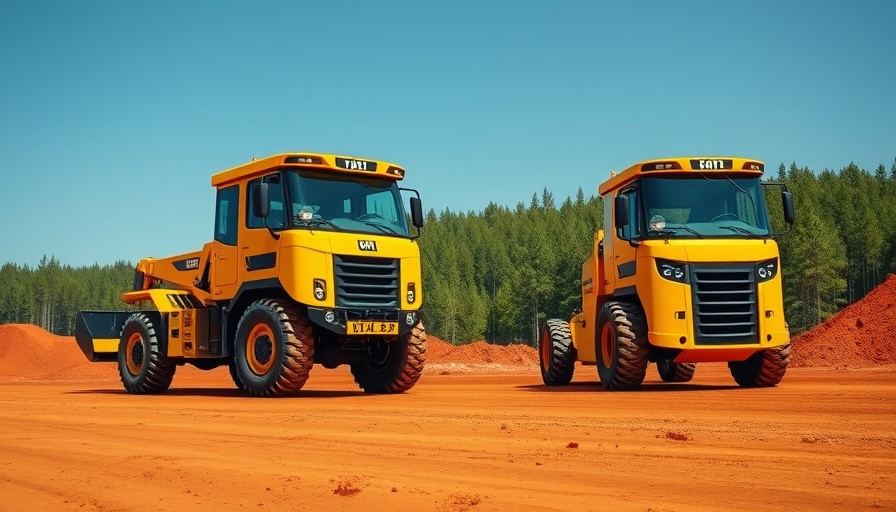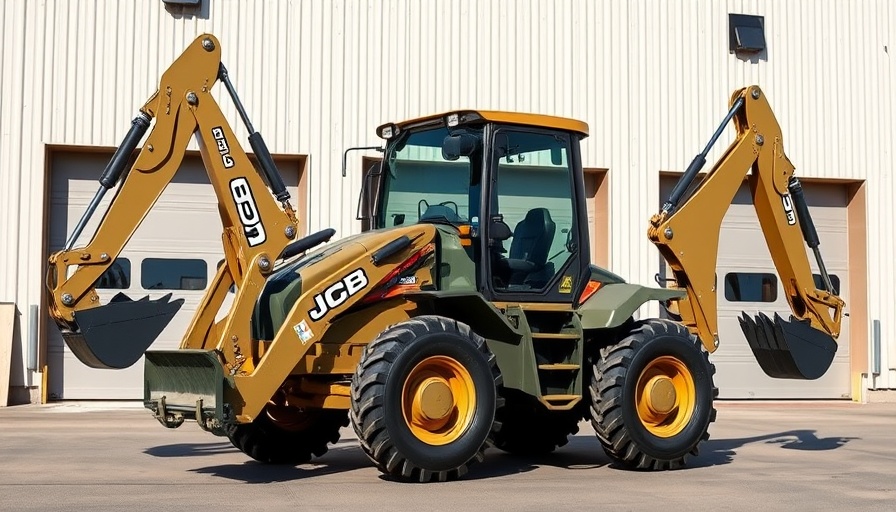
Revolutionizing Construction: Affordable Autonomy Gains Traction
Bluelight Machines is changing the landscape of construction with its groundbreaking autonomous technology designed to make heavy machinery operations both affordable and highly efficient. According to CEO Dick Zhang, the common belief that implementing autonomous equipment is costly and complex has been disproven by their latest innovations.
Affordable Solutions for Modern Construction Needs
Zhang asserts that businesses can integrate their systems for less than $40,000 and in as little as 90 minutes. The beauty of Bluelight's setup is its plug-and-play design, which comprises GPS receivers, cameras, and a 'brain' box—all of which mount securely to existing machinery without the need for extensive modifications. This ease of implementation addresses a critical pain point in the construction sector: the pressure to maintain production rates.
Operated through a single mobile device, the system allows users to oversee multiple machines, which is a game-changing development for site managers looking to boost productivity while reducing labor costs. Bluelight’s technology allows for impressive scalability; whether dealing with asphalt rollers or articulated dump trucks, the adaptability of the equipment makes it particularly well-suited for varied project demands.
Training Made Simple: Quick Onboarding for Workers
One of the standout features of Bluelight’s technology is how quickly it can bring new operators up to speed. Zhang highlights that even someone with no prior experience in the field can learn to operate the machinery with a simple tutorial that takes about three minutes. This means that teams can quickly pivot and deploy resources without the long training times typically associated with new technologies, which can lead to delays in projects.
Insights into the Construction Future: Trends and Predictions
As the construction industry looks towards a more automated future, Bluelight Machines appears to be at the forefront of this transition. Their model not only provides cost-effective solutions but also aligns strategically with broader trends towards sustainability and efficiency in construction practices. The ability to reduce manpower and adapt existing equipment lowers the barrier to adopting autonomous technologies.
This evolution raises questions about the future workforce of the industry. Will the rapid integration of autonomous technology lead to job losses, or will it empower existing workers to focus on higher-level oversight roles? Stakeholders must consider these implications while navigating this transition.
Economic and Social Impact of Affordable Autonomy
As equipment becomes more accessible and easy to deploy, smaller firms and community-driven projects may find themselves at a significant advantage. Consider property developers and contractors with tighter budgets who can now access advanced technologies without the crippling financial strain associated with conventional models of automation.
Initially, the shift toward autonomy may seem daunting, but the long-term benefits—reducing inefficiencies, promoting sustainable practices, and supporting community development—make affordable autonomous solutions not just a logical choice but a necessary evolution in the construction landscape.
Conclusion: The Time to Embrace Change is Now
As construction business owners, property developers, and facility managers face the ever-increasing pressure to innovate and adapt, technologies like Bluelight Machines' affordable autonomy present a clear advantage. The ability to maintain production levels while enhancing quality and safety should motivate stakeholders across the industry to explore these options for their operations.
 Add Row
Add Row  Add
Add 




Write A Comment